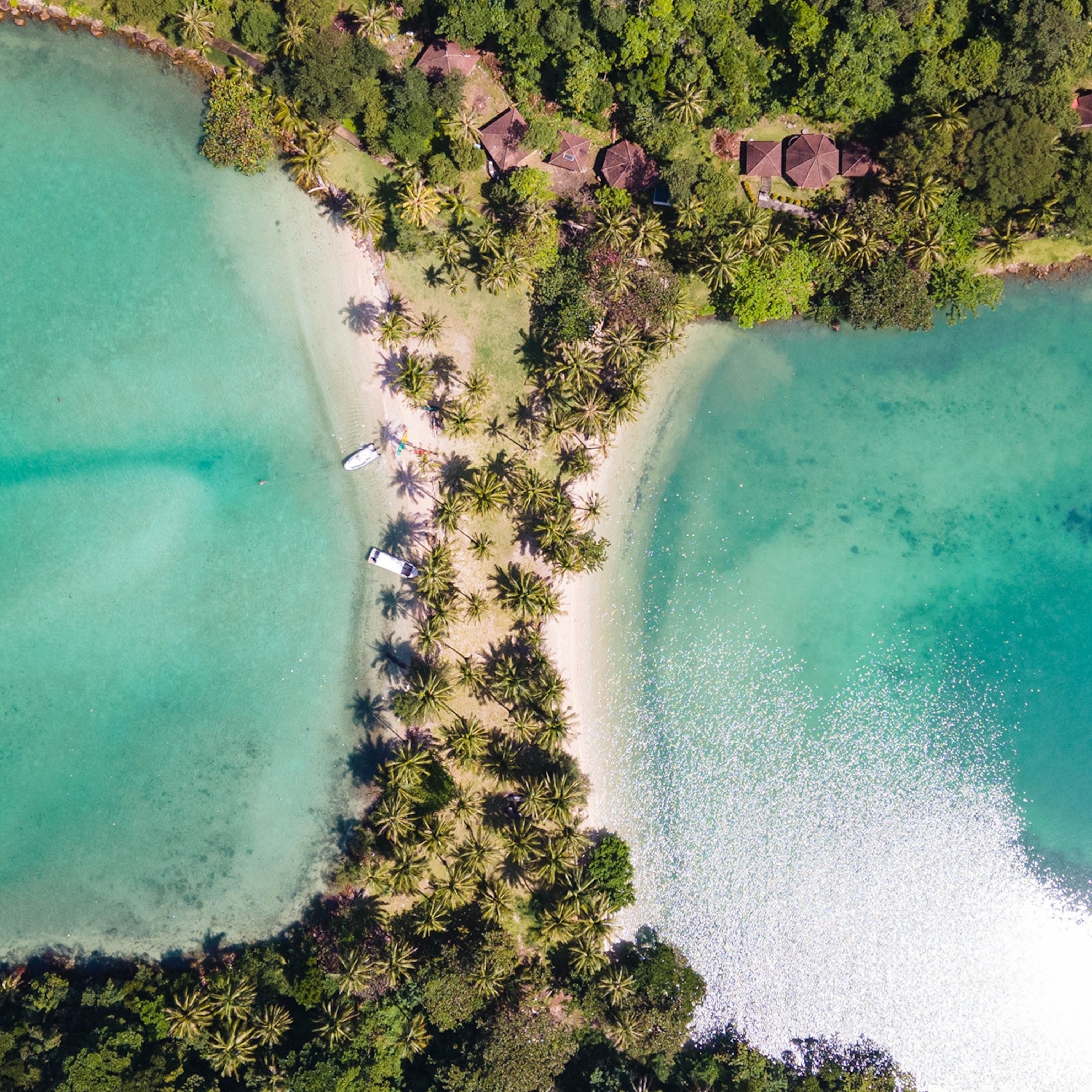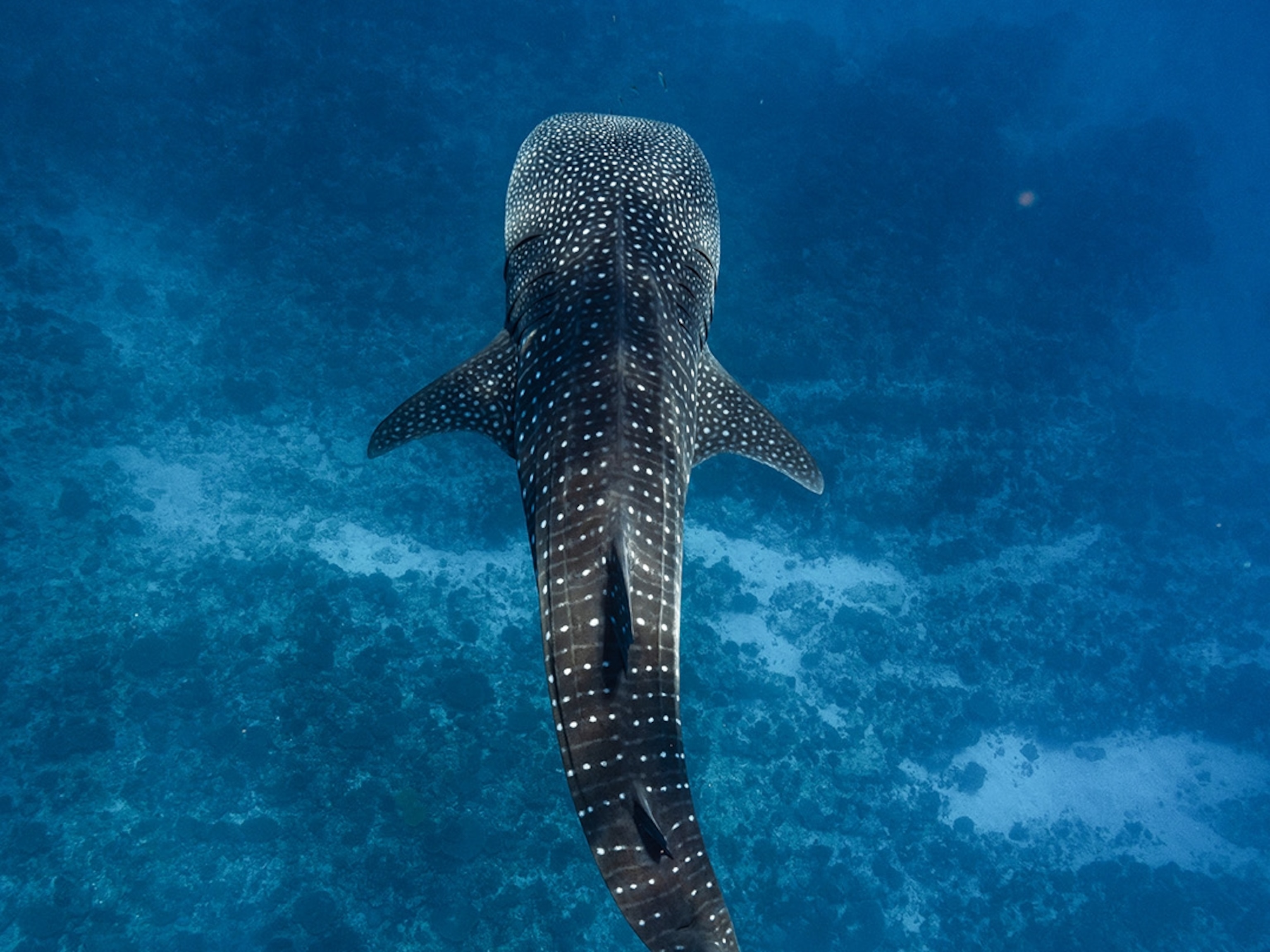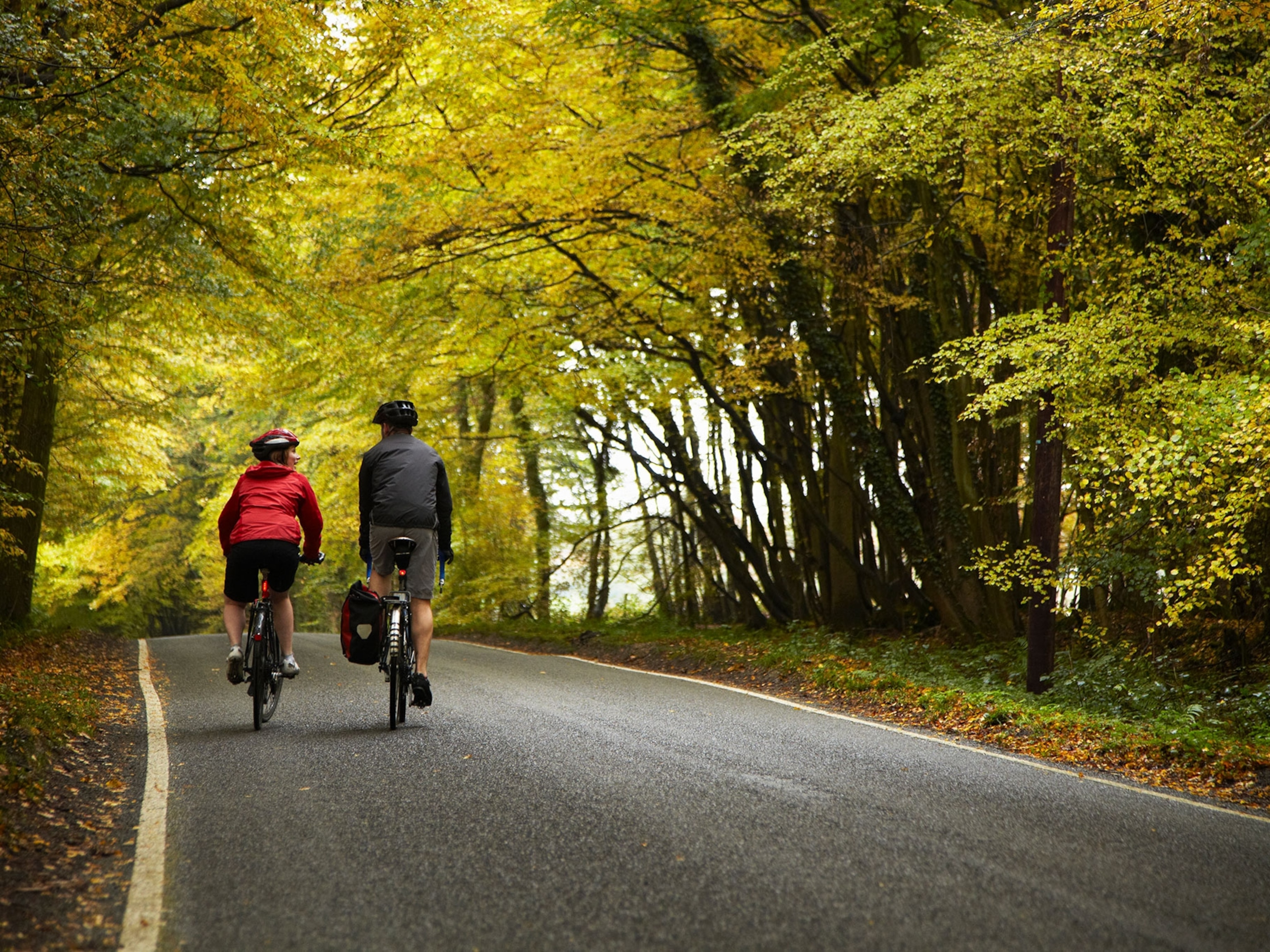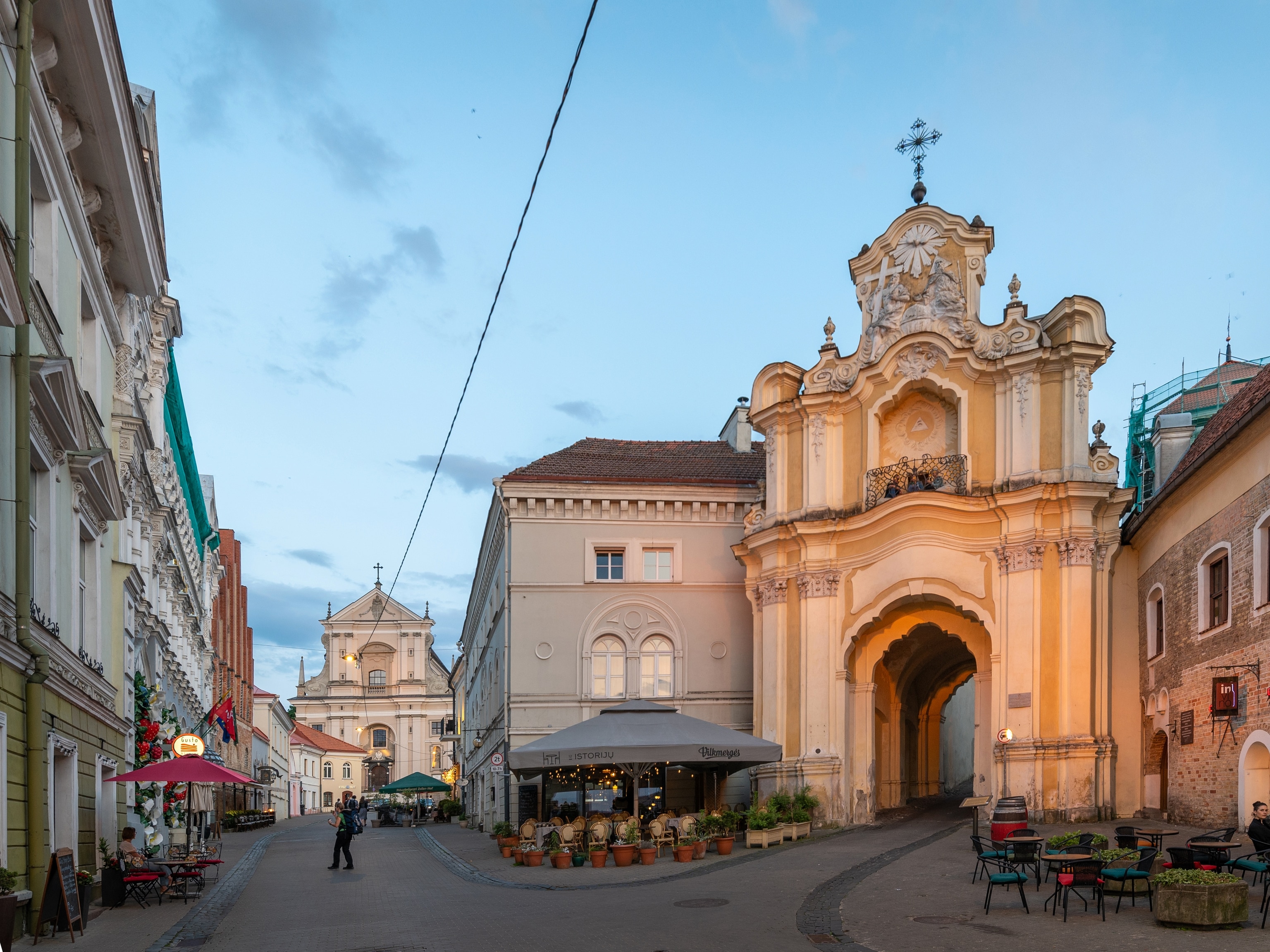Humans are nomadic by nature—we’re descended from hunter-gatherers, after all. But the COVID-19 pandemic means people, usually a wanderlusty bunch, are caught between lockdowns and cautious reopenings, between getting out and seeing the world and watching it go by from outside our windows or streaming on our screens.
But there are still ways to be on the move, whether it’s Parisians, who can be flaneurs on their city streets again, or Americans, who are taking to their backyards for campouts. We’re mostly in a dream-now-go-later stage, but these are some ways the travel world is responding to new realities, and planning for a bright future.
Pass the marshmallows
Travel-loving families have had to get creative in a time of pandemic restrictions; they are turning to everything from indoor safaris to virtual-reality tours of Machu Picchu. When Portland, Oregon photographer Susan Seubert learned that neighbors were pitching a tent in their yard, she asked to photograph them and their two daughters as part of her project documenting daily life in lockdown.
“Our street snakes down into a city park, so it’s a great place to camp,” Seubert says. She provided the ingredients for s’mores, stayed 10 feet away with a tripod, and captured them as they built a campfire and settled in for the evening.
It wasn’t the first time the Wolf family had camped at home. In fact, Bryan Wolf says they sleep in their backyard about 70 percent of their nights since lockdown began. “The campsite became an escape from the realities of quarantine,” Wolf says. “We certainly never anticipated this gift of time and connection as a silver lining.”
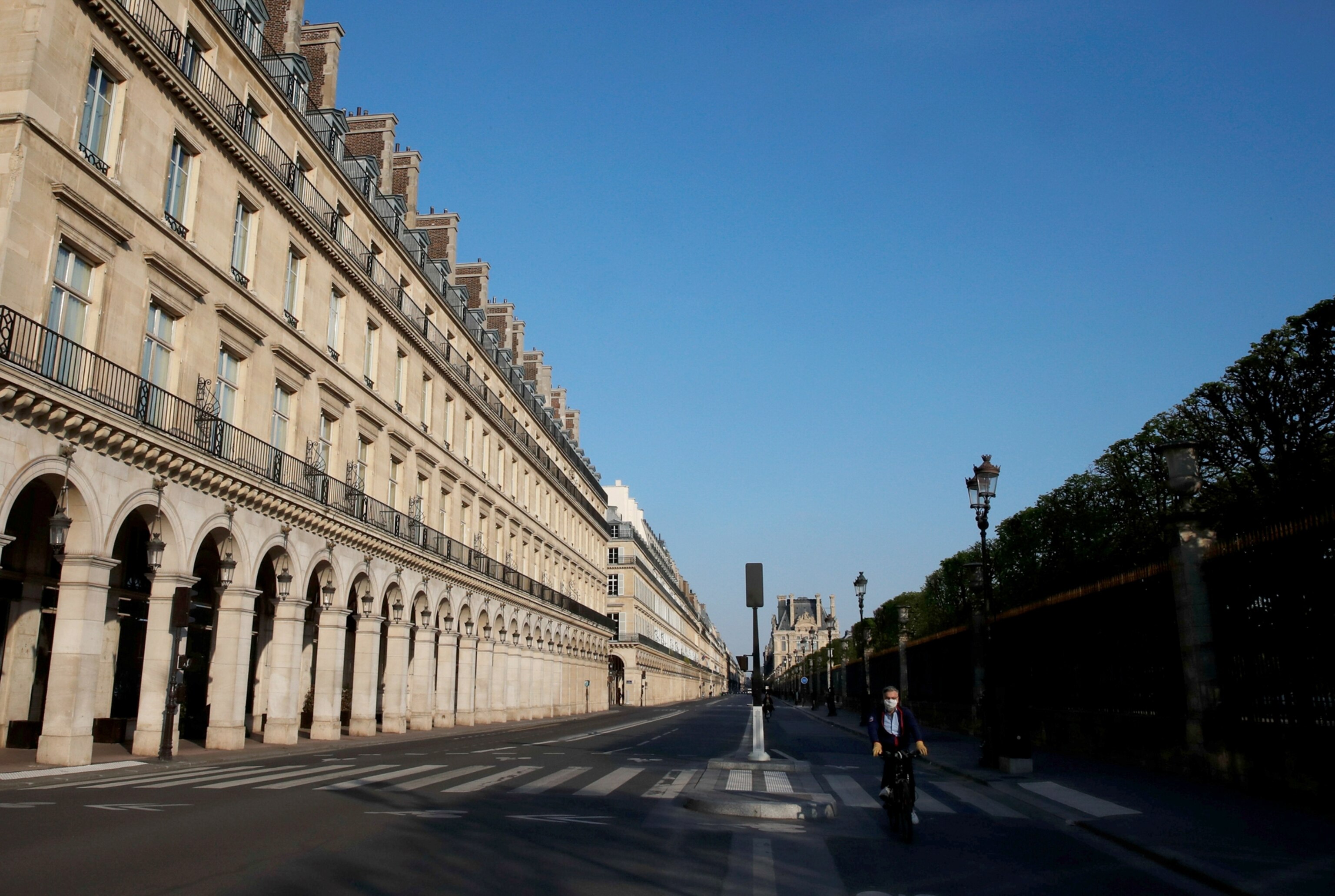
Paris reopens
This week marks the official end of le confinement in France after eight weeks of quarantine. Stepping outside their apartments, Parisians noticed new bike lanes throughout the capital. In fact, the Rue de Rivoli, a main urban artery abutting the Louvre, has closed entirely to (private) car traffic. A total of 50 kilometers (31 miles) of new, temporary bike lanes will be unveiled in the coming days. Paris is betting on les velos as a means to combat pollution while also promoting a means of transport encouraging social distancing. The $22-million plan to boost cycling includes funds for individual bike repairs up to $55.
Although international travel to France is still restricted, you can virtually take a trip to admire Notre-Dame de Paris. A year after the catastrophic fire, Paris Musées has unveiled an online exhibition of the great cathedral in 100 works of art. (After stalling for a few weeks during the lockdown, construction work on the beloved landmark has now resumed with new hygiene and safety rules.) Tracing the Gothic cathedral’s history and evolution, the exhibition showcases paintings, illustrations, engravings, and photographs by figures such as Charles Le Brun, Victor Hugo, Eugène Atget, and Brassaï. “The exhibition reveals unexpected points of view on Notre-Dame de Paris,” says Charles Villeneuve de Janti, collections director and the curator, “while also showing the diversity of works inspired by the cathedral.”
Berlin’s new anti-virus hotel
While Berlin’s 62-room Aeronaut Apartment Hotel was in the final stages of construction this spring, the coronavirus crisis exploded, prompting builders to outfit the property with robust safety measures and design elements tailored to post-pandemic travel.
The hotel aims to open in early June with a “Safer Than Home” concept based on the standards of medical facilities, incorporating features such as hygienic airlocks at entrances, contactless check-in and elevators, and UV light for room disinfection. Assistant manager Ehab Bedaiwy says they’ll also sanitize guests’ shoes and luggage and implement thermal screenings similar to the ones some airports do. “We thought about how we could adapt and make new standards,” he says. “It was an easy decision.”
According to tourism officials, the Aeronaut is the first hotel in Berlin (and perhaps all of Germany) to incorporate such rigorous antivirus measures during the construction stage. Such initiatives reflect the growing trend to ramp up cleanliness; Hilton, Marriott, and homestay giant Airbnb have all announced new protocols, and the American Hotel & Lodging Association recently released enhanced sanitization guidelines.
Safe travel Rx: robots?
In science fiction, robots tend to get cast as bad guys (2001’s HAL, Decepticons in The Transformers). But robotic technology is being deployed for good in global efforts to combat coronavirus. The Pittsburgh International Airport, in a partnership with Carnegie Robotics, just rolled out five autonomous wheeled cleaning robots which scrub floors and dose them with ultraviolet (UV) light, a first for a U.S. airport. The UV light is thought to eliminate microorganisms, a hypothesis Carnegie Robotics is testing with the program. “People have been interested and wondering ‘what is this, what does it do?’” says Christina Cassotis, the airport’s CEO. “We’re looking for anything that will inspire confidence in travel. If people have to be at the airport, I want them to feel good about it.”
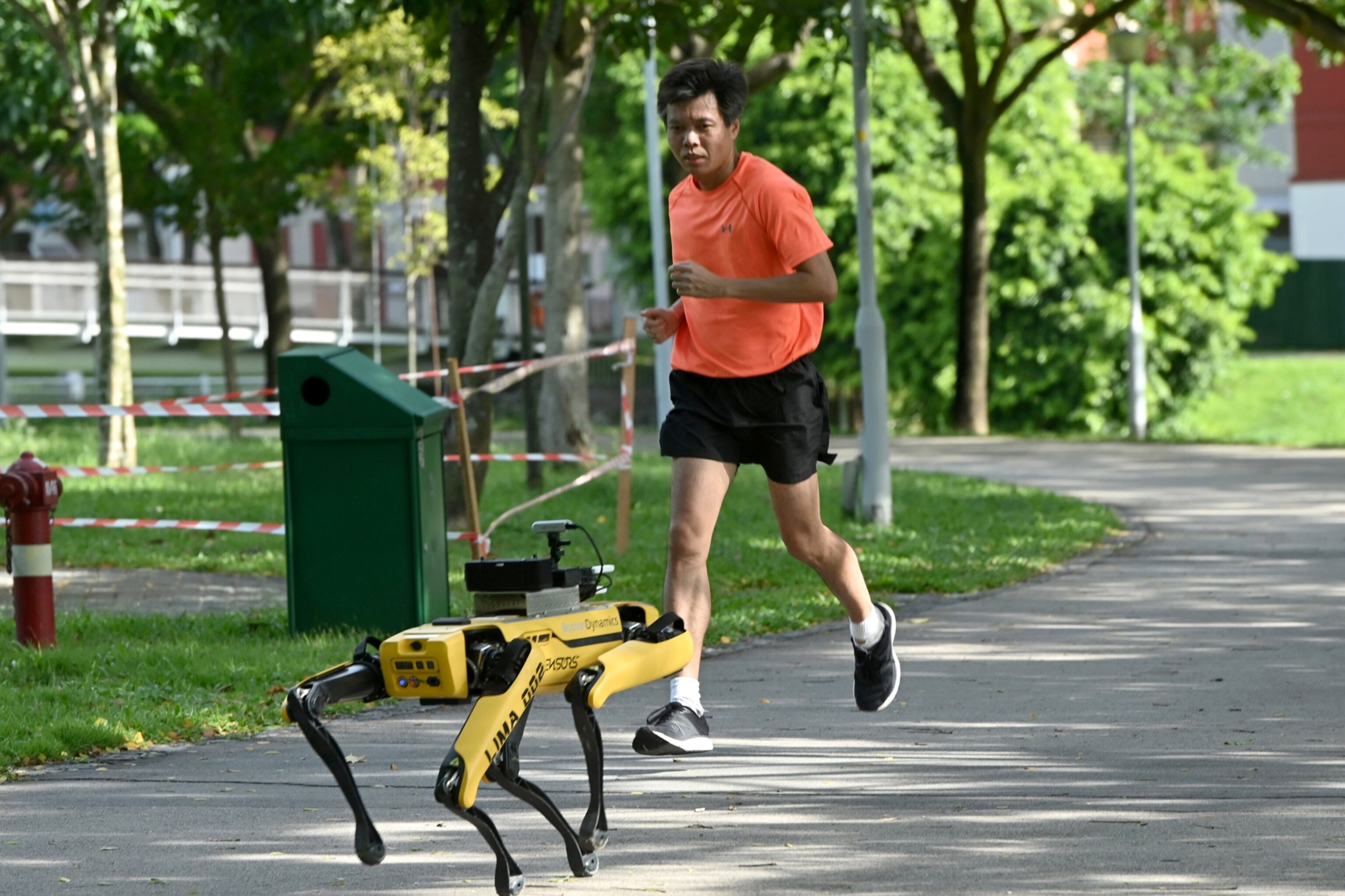
In Singapore, slightly creepy, four-legged robot dogs (aka SPOTS) are now—rather politely—telling people in city parks to stay healthy and keep at least one meter apart. The pilot program launched by the country’s parks and government is meant to minimize physical contact among park staffers and reduce the manpower need to patrol open spaces. The yellow bots—with spindly, jointed legs—operate by remote control and contain cameras that both collect data on crowd sizes and keep them from running into humans.
Appalachian spirits in Asheville
The coronavirus has sparked creative solutions around the world. In Asheville, North Carolina—a city famously hopped up on clever ideas (you can partially credit the numerous local craft breweries and their crazy beer can designs)—farmers and chef-activists have launched We Give A Share, a program that does double duty: it feeds locals while sustaining farms during COVID-19. Donors purchase a farm share equivalent to a season’s worth of weekly CSA (community-supported agriculture) boxes and then the donated produce goes directly to Southside Community Kitchen to prepare free meals to those in need.
Crafty local cooks are curating “the world’s first crowdsourced Covid Cookbook,” filled with recipes from home chefs around the world; proceeds from its sale go to Feeding America. Asheville local Sarah Ubertaccio and culinary cohort Rachel Goodman started the project to share ideas for recipes with limited ingredients. The cookbook is still in the test kitchen, but some recipes are available online.
The Blue Ridge Mountains region is among the most biodiverse places on the planet, so locals are foraging for edible inspiration in their own backyards. No Taste Like Home—a foraging eco-tour company—has launched an effort to help locals make a yard survey of edible greens, berries, and mushrooms with helpful tips on harvesting, medicinal uses, and recipes and video content.
Help artisans in India and Laos
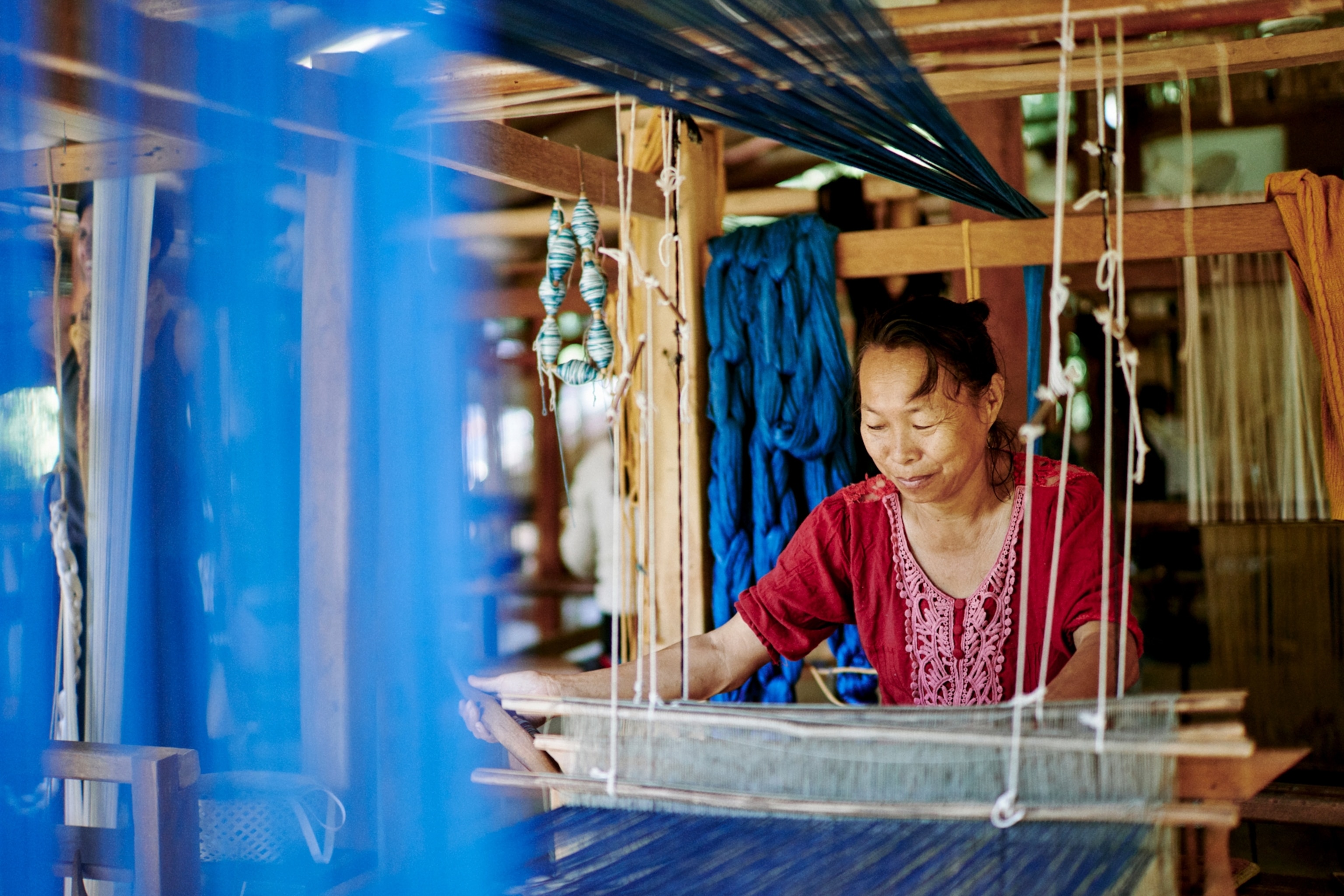
Many fair-trade artisan collectives not only preserve age-old cultural practices (Oaxacan weaving, Moroccan pottery painting), they also employ locals and offer visitors classes (and ethical shopping opportunities).
But businesses like Ock Pop Tock, a Mekong River-side weaving and dyeing center in Luang Prabang, Laos, are suffering a drastic drop in income due to coronavirus shutdowns. “We employ 90 people, including weavers and people who work in our shops and restaurant, and we’re committed to paying them even while the center is closed,” says spokesperson Valérie Olla. “The best way to support our artisans’ livelihoods is to make a purchase on our online shop.” Textiles on offer, many crafted in the weavers’ home workshops during the crisis, include sinhs (skinny, traditional Lao skirts), delicate ikat scarves, and batik placemats.
On the outskirts of Jaipur, India, the block-printing haven Studio Bagru usually employs 100 printers, block carvers, and teachers and draws hundreds of tourists a year for hands-on workshops and tours. “Since the government lockdown March 22, everything in India has come to a standstill. All aspects of the supply chain have been affected, from raw materials like fiber and fabric to printing supplies like inks and dyes,” says Studio Bagru founder Jeremy Fritzhand. “The artisans have suffered due to canceled orders from buyers.” To help them survive, you can flexibly prebook classes for future dates, donate to a fund for artisans, or purchase hand-carved wooden printing blocks and fabric for at-home projects.
Return to Aus
The number of people visiting Australia is at a record low due to COVID-19, according to the latest data from the Australian Bureau of Statistics. Yet this weekend, you can snorkel the Great Barrier Reef, workout with Chris Hemsworth’s personal trainers, delve into Australia’s wine country, and trek around natural wonders—all via livestream events.
The weekend-long “Live from Aus” hopes to intrigue and inspire future travelers while they stay home, says Tourism Australia managing director Phillipa Harrison. “The truth is nobody truly knows exactly what travel to Australia will look like in the future. Or to any other country for that matter,” she says. But “we’ve also seen people’s reliance upon social media and digital channels increase significantly during this crisis, and the importance of these platforms for tourism businesses as marketing, communication, and engagement tools will only become greater in a post-COVID-19 world.”
To sail or not to sail
Adding to the list of cruise lines that have basically scrapped their summer seasons, Princess announced last week the cancellation of voyages in destinations including Alaska, the Caribbean, Europe, Japan, Australia, and Hawaii. But sister line Carnival is taking a different tack: it plans to resume some cruises on August 1. Pending government approvals and new protocols, eight ships will depart from Miami, Port Canaveral, and Galveston—ports easily reached by car. The fact that some cruise ships became hot zones of coronavirus infection this spring isn’t deterring would-be passengers. Carnival has seen a wave of bookings for August that’s 200 percent more than for the same time last year.
(Related: Want to stay healthier on a cruise? Here’s some advice.)
Just landed: Travel news
- Have podcast, will virtually travel: A good travel podcast acts as an aural postcard, spieling out details about a destination for an audience that’s not jetting off—yet. We’ve been flying away with Get Lost, where travel writer Joe Stills and guests (South African anti-poaching crusaders, Egyptologist Ramy Romany) dive into destinations from Costa Rican jungles to the steps of Siberia; and The Bitter Southerner, which explores issues like the history of the Tennessee Valley Authority and okra’s role in New Orleans gumbo, all relayed in host Chuck Reese’s wry Georgia drawl. And on a recent episode of the New York Times’ The Daily, travel evangelist Rick Steves waxed poetic and nostalgic about what he’s doing while he’s grounded by the coronavirus.
- Rock out with a Rockette: Manhattan’s legendary dance companies are still on hiatus, but you can learn moves from the living rooms of marquee names with the Dance Theater of Harlem’s livestream classes Monday through Saturday at 6:30 p.m. EST, which delve into simple ballet positions or Afro-Cuban bomba steps. And Radio City Music Hall’s high-kicking Rockettes teach heart-pumping, calf-toning livestream dance-fitness classes on Instagram. In both cases, sessions are recorded and can be streamed later on demand.
- You can still scuba: Aspiring divers can start their certification while on dry land—even in PJs on the couch. PADI, a popular scuba training organization, offers an online program that teaches the knowledge portion—things like how depth affects air intake and what hand signals to use underwater. When dive shops and pools reopen, you’ll be ready to learn the skills portion. Once you’re certified, there’s no need to travel to far-flung destinations, says Kristin Valette Wirth, PADI’s worldwide chief marketing officer. “Local shores, lakes, and quarries shouldn’t be underestimated, as divers can find unexpected surprises, wildlife, and beauty right in their own backyards.”






















